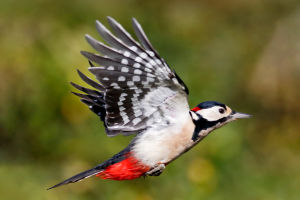Greetings, Lykkers! Have you ever dreamt of capturing the grace and playfulness of dolphins as they glide through the ocean?
Dolphin photography is an exhilarating experience that combines the adventure of wildlife exploration with the art of photography.
Whether you're a seasoned photographer or a curious novice with a passion for these marine marvels, this guide will help you snap breathtaking shots of dolphins in their natural habitat.
Understanding Your Subjects
Dolphins are intelligent, social animals known for their playful behavior and acrobatic displays. Before heading out with your camera, take some time to learn about their habits. Dolphins are most active during the early morning and late afternoon, making these ideal times for photography. They often travel in pods, so where you find one, more are likely to follow.
Gear Up for the Challenge
Camera and Lenses: A DSLR or mirrorless camera with a telephoto lens (200mm or greater) is ideal for capturing dolphins from a distance. Waterproof cameras or housing units are essential for any in-water photography.
Settings: Use a fast shutter speed (1/1000th of a second or faster) to freeze the action and a high ISO setting to compensate for the often-dim lighting conditions at sea.
Stabilization: Sea conditions can be challenging. A stabilizing harness or a tripod designed for boats can help reduce camera shake.
Finding the Perfect Spot
Dolphins inhabit waters all around the globe, from the warm regions near the equator to cooler, temperate zones. Some of the best places for dolphin photography include the clear waters of the Bahamas, the coastal regions of Hawaii, and the Azores in the Atlantic. Research tours and expeditions that practice responsible wildlife interactions, ensuring that your photography adventure respects the dolphins' natural behavior and environment.
However, the most recommended spot is the Dolphin Research Center in the Florida Keys.
Nestled in the heart of the Florida Keys, the Dolphin Research Center (58901 Overseas Highway, Grassy Key, FL 33050, USA) offers a unique opportunity for photography enthusiasts to capture the beauty and grace of dolphins in a respectful, educational environment.
Dolphin Research Center
How to Get There
By Air: The closest major airport is Key West International Airport (EYW), approximately 60 miles from the center. Alternatively, Miami International Airport (MIA) is about 100 miles away, offering more flight options.
By Car: From Key West, take US-1 North for about an hour's drive. From Miami, take US-1 South, a scenic route that takes approximately 2 hours.
Tickets and Timing
Admission: General admission is around $30 for adults, with discounts available for children and seniors. This fee includes guided tours, and educational presentations.
Best Time for Photography: The center opens at 9:00 AM and closes at 4:30 PM. The golden hours, early morning or late afternoon, are ideal for photography, offering soft, natural light.
Accommodations
The Florida Keys offer a range of accommodations, from luxury resorts to cozy bed and breakfasts. For proximity to the Dolphin Research Center:
Tranquility Bay Beach House Resort(2600 Overseas Highway, Marathon, FL 33050): Located about 10 minutes' drive from the center, this resort offers beautiful beachfront views and comfortable amenities. Prices start at approximately $250 per night.
Grassy Key RV Park & Resort(58671 Overseas Hwy, Marathon, FL 33050): A budget-friendly option for those who prefer an RV or camping experience, with rates starting at $100 per night for RV sites.
Grassy Key RV Park & Resort
The Art of Composition
Capturing Action: Be ready to capture jumps, flips, and tail slaps. Practice your timing to catch these moments of peak action.
Framing: Use the rule of thirds to compose your shots, positioning dolphins at the intersections of your frame for a more dynamic image.
Eye Contact: Shots with dolphins making eye contact with the camera can be particularly compelling, adding a sense of connection to your photos.
Ethical Considerations
Respecting the dolphins and their habitat is paramount. Always maintain a safe distance, and avoid disrupting their natural activities. Follow guidelines set by wildlife conservation organizations and local regulations to ensure that your photography does not harm the animals or their environment.
Final Thoughts
Dolphin photography offers an unparalleled opportunity to connect with nature and capture the essence of the ocean's most charismatic inhabitants. With the right preparation, respect for wildlife, and a bit of patience, you can create beautiful, inspiring images that celebrate the joy and beauty of dolphins.
Happy shooting, Lykkers, and may your adventures bring you closer to the wonders of the sea.


